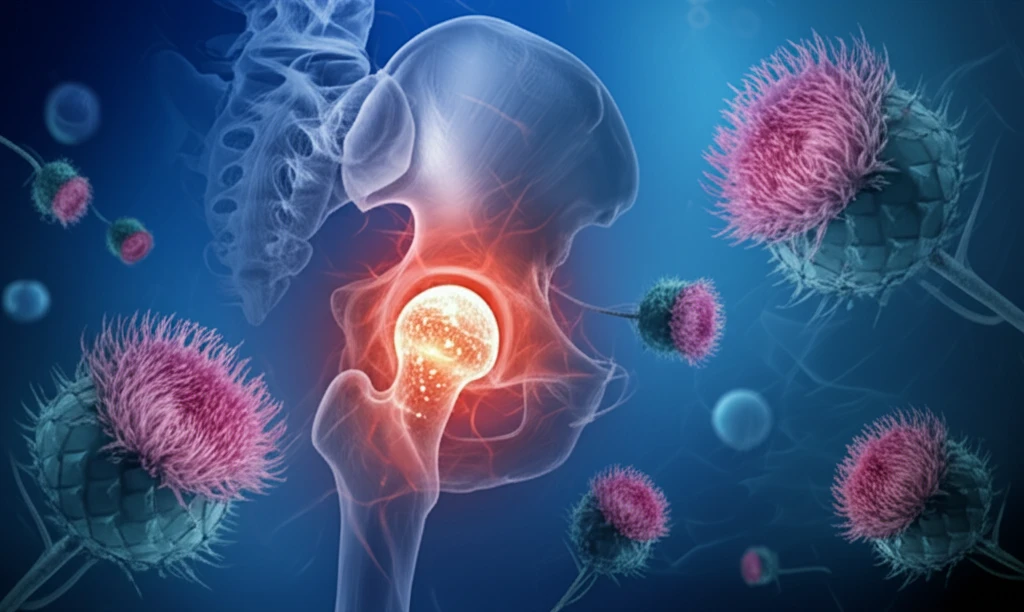
Safflower's Sweet Secret: How This Natural Polysaccharide Could Revolutionize Joint Health
"Unlock the potential of safflower in preventing steroid-induced avascular necrosis and promoting better joint health."
Joint health is a cornerstone of overall well-being, enabling us to move freely and participate fully in life. However, conditions like avascular necrosis—particularly in the femoral head, the top of the thighbone that fits into the hip socket—can severely compromise mobility and quality of life. This condition, often linked to steroid use, occurs when blood supply to the bone is disrupted, leading to bone tissue death.
The quest for effective treatments and preventative measures against avascular necrosis has led researchers to explore natural compounds with promising therapeutic properties. Among these, a polysaccharide derived from safflower (Carthamus tinctorius L.) has emerged as a potential game-changer. Polysaccharides, complex carbohydrates found in plants, have diverse biological activities, including anti-inflammatory and antioxidant effects.
In recent studies, scientists have been diving deep into understanding how safflower-derived polysaccharides can combat steroid-induced avascular necrosis of the femoral head. This research is particularly relevant for individuals undergoing long-term steroid treatments, who face an elevated risk of developing this debilitating condition.
The Science Behind Safflower's Joint-Saving Potential

A recent study published in the International Journal of Biological Macromolecules sheds light on the beneficial effects of a safflower polysaccharide on steroid-induced avascular necrosis in rats. The researchers isolated and purified a water-soluble polysaccharide (SPS) from dried safflower and rigorously analyzed its structure using chemical and instrumental methods. This SPS features a repeating backbone of 1,4,6-β-Glcp, a specific type of glucose molecule, which is believed to contribute to its therapeutic effects.
- Improved Bone Density: SPS treatment notably mitigated the reduction in bone mineral density typically associated with steroid-induced necrosis.
- Reduced Histopathological Changes: The abnormal changes in bone structure and tissue, characteristic of avascular necrosis, were significantly lessened with SPS administration.
- Lower Apoptosis Rate: SPS helped to decrease the rate of osteocyte apoptosis, preserving bone cells and supporting overall bone health.
- Balanced Serum Levels: SPS positively influenced serum hydroxyproline (HOP) and hexosamine (HOM) levels, crucial indicators of bone metabolism.
Embracing Natural Solutions for Joint Wellness
As research continues to unfold, the potential of safflower polysaccharide in preventing and treating avascular necrosis offers a promising avenue for those at risk, especially individuals undergoing long-term steroid treatments. Incorporating natural remedies and exploring innovative therapeutic options can pave the way for enhanced joint health and improved quality of life. The findings from this study encourage further investigation into the broader applications of safflower polysaccharide, potentially revolutionizing how we approach joint wellness and bone health in the future.
